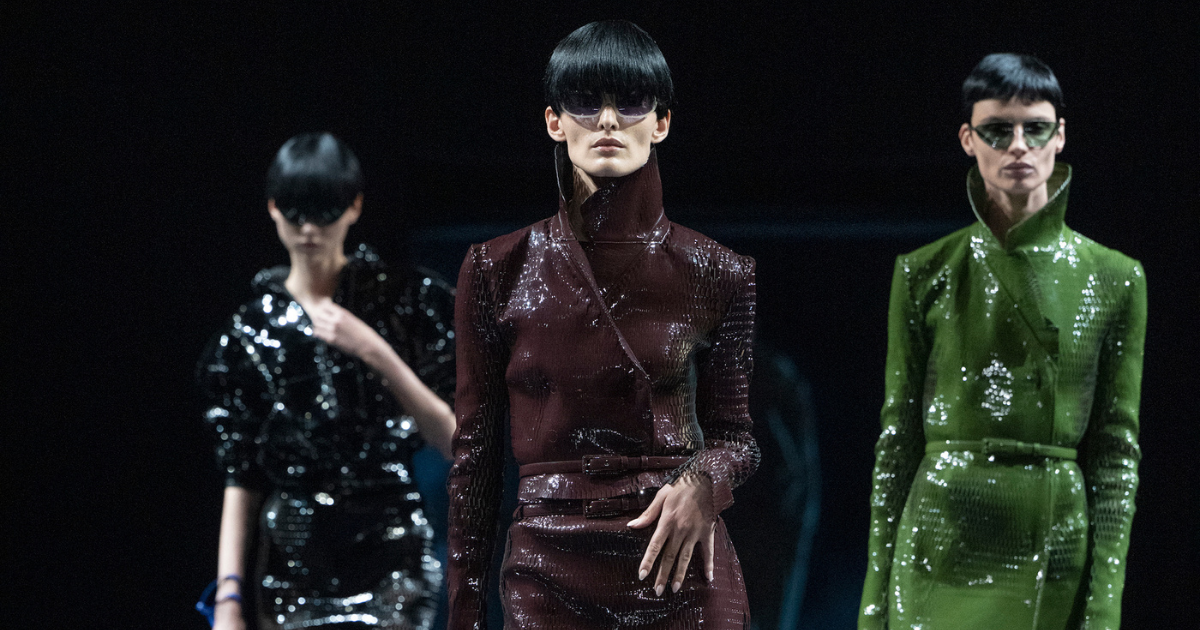An ode to Uzbekistan’s heritage: LALI weaves history with golden threads
How Uzbekistan’s gold embroidery legacy found new life on the runway

Eastern heritage found its voice in the language of fashion when, on July 6, the Uzbek brand LALI unveiled its new collection during the week of Haute Couture Fashion Week in Paris. The golden threads of Bukhara, carrying the warmth of artisans’ hands and the whispers of ancient ayvans, gleamed on the runway like a song of heritage woven into the fabric of modernity. Gold embroidery is one of the most refined and significant branches of Uzbekistan’s folk art from the 19th to early 20th centuries. Unfortunately, works from earlier periods have not survived, which makes showcasing this craft on the global stage today all the more important.
Designer Lali Fazilova and her team spent a year researching: they studied archival sketches, explored the techniques of gold embroidery alongside contemporary artisans, and sought new meanings within the ornaments that once adorned the palaces of Bukhara’s emirs. It was during their rule, by the end of the 19th century, that the art of gold embroidery became widespread in Uzbekistan – at that time, garments adorned with gold thread were symbols of honor and social status. Thus, preserving the authenticity of the traditional techniques, so highly valued in that era, while simultaneously breathing new life into them through the lens of contemporary fashion, became a central mission of the collection.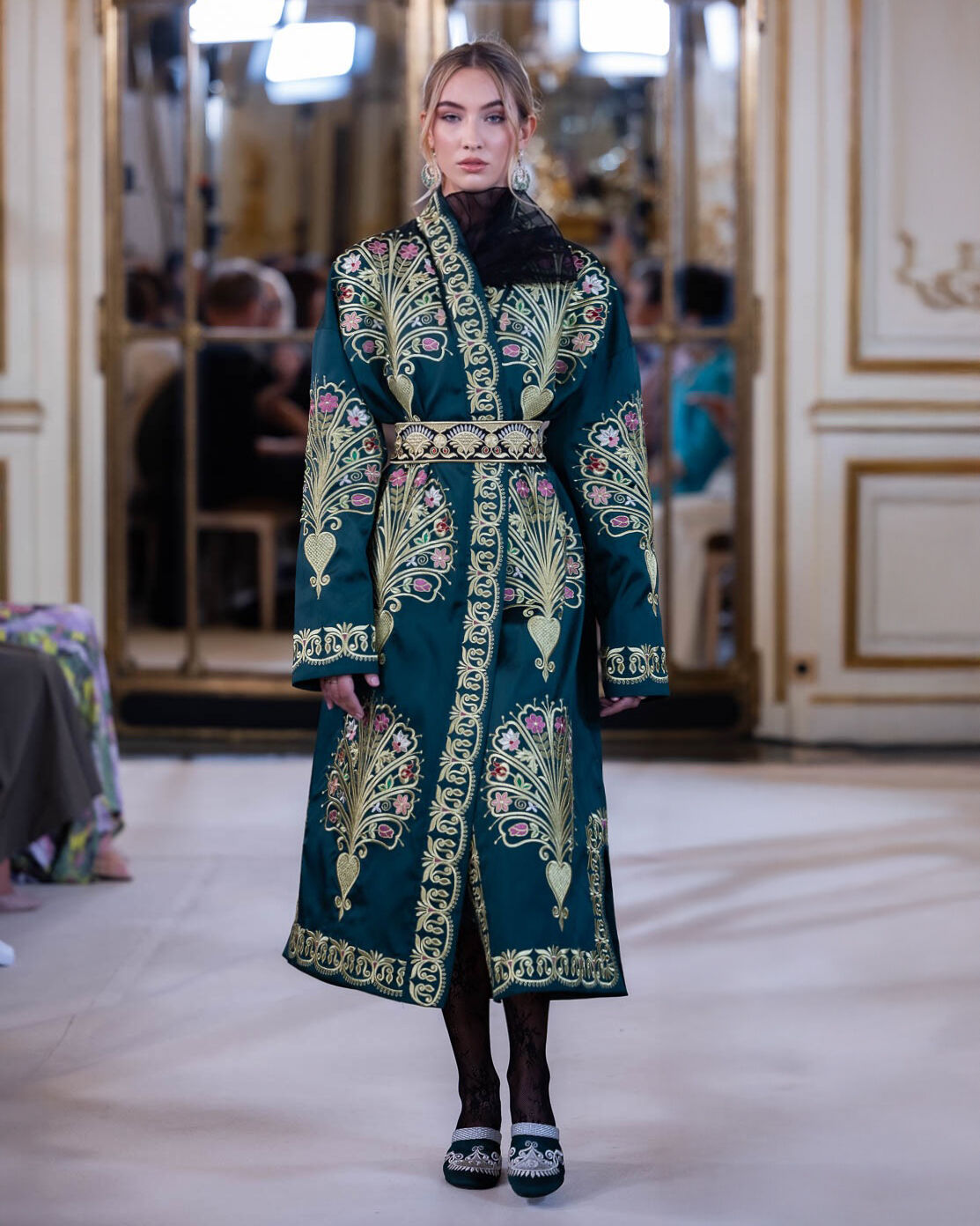
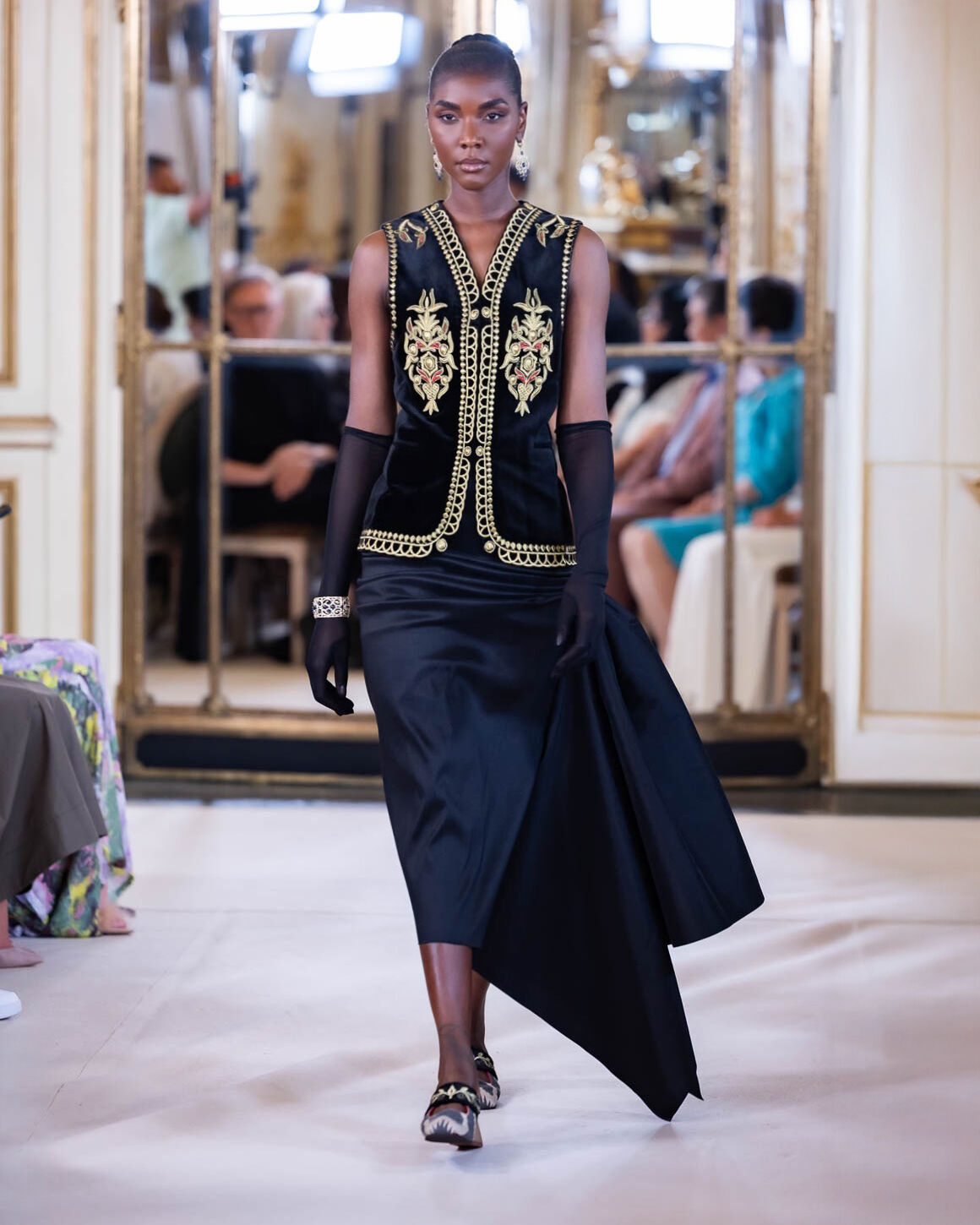
The primary inspiration for the LALI collection came from the floral murals of the palace “Sitorai Mokhi Khosa”, built for the Emir of Bukhara Sayyid Mir Muhammad Alim Khan, and from the elegant bouquet motifs embellishing the ayvans of old Bukhara.
These historic patterns came to life in peplums, belts, and jackets, thanks to the hands of hereditary gold embroiderers Mahfuza Salimova, Nargiz Muradova, Nazira Khamrayeva, and artist Kahramon Yakhyayev.
All the garments in the show were presented in collaboration with the Kazakh jewelry house SALTANAT Diamond Gallery, which turns precious stones into true works of art. This time, the jewelry pieces were inspired by nature: the flutter of a butterfly, blooming meadows, winding rivers, and trees swaying in the wind. This collaboration draws a historical parallel – during the golden age of embroidery, pieces were also adorned with precious and semi-precious stones such as diamonds, sapphires, and emeralds.
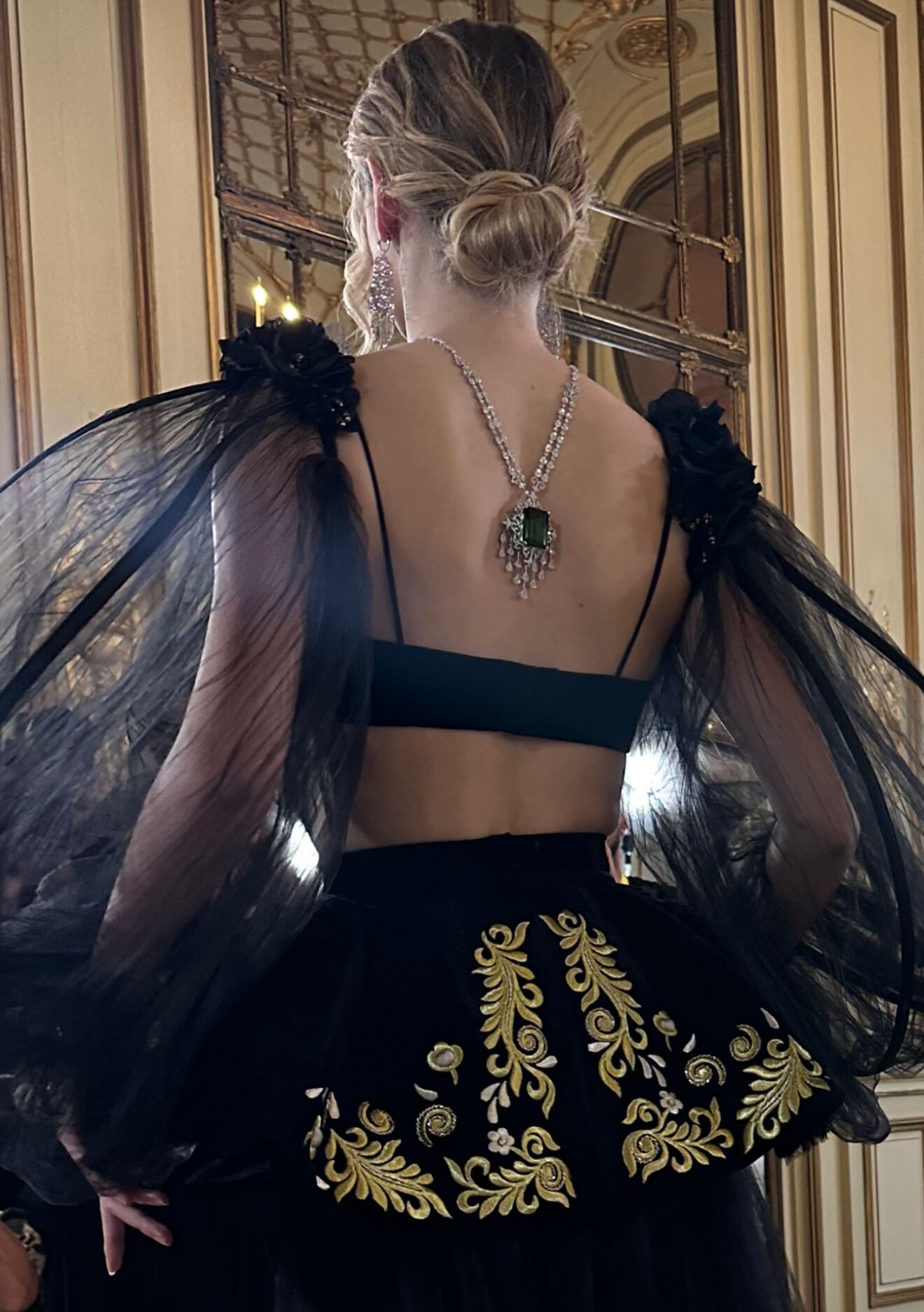
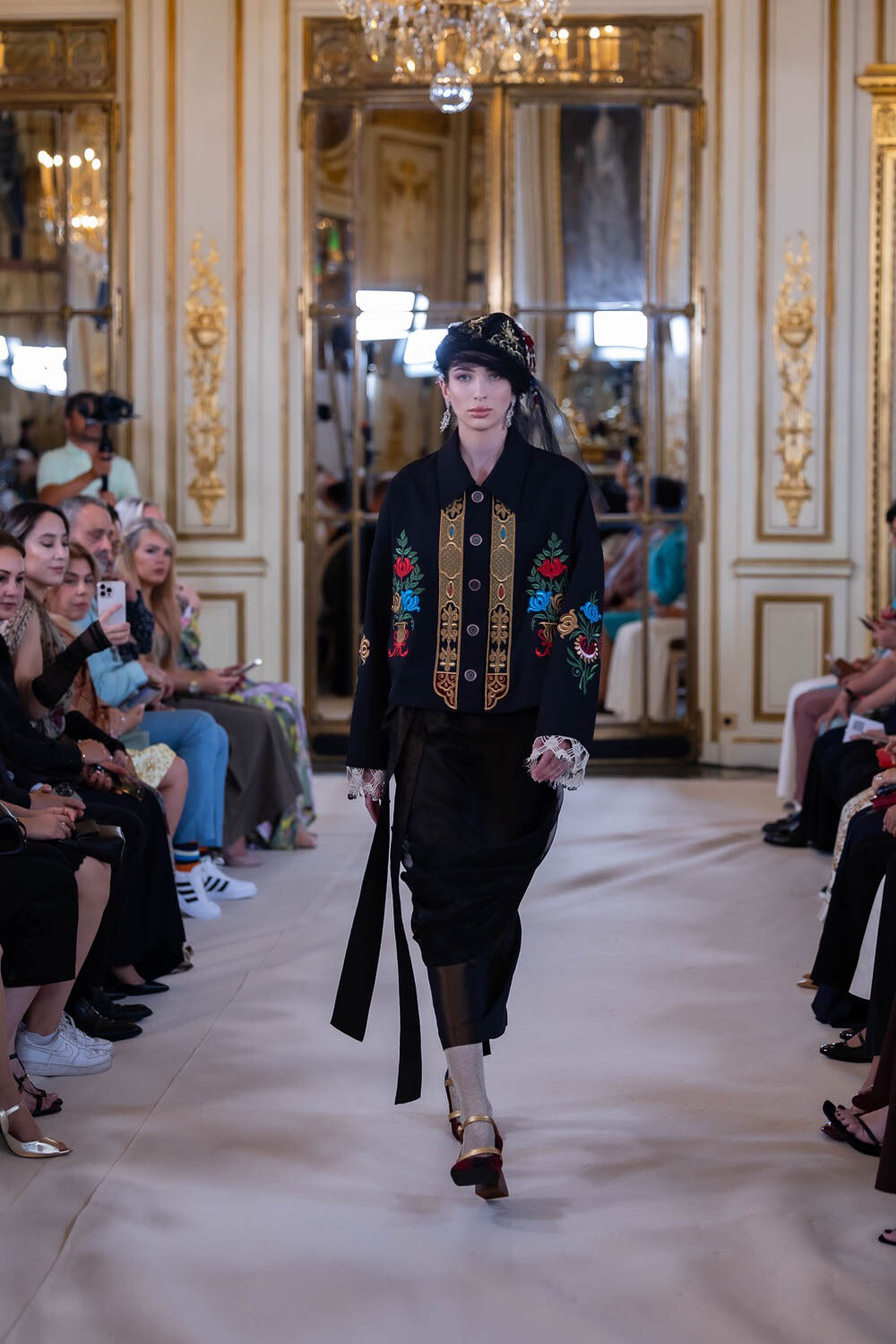
“I’m glad that this time we were able to amplify the collection’s aesthetic with jewelry that is itself a work of contemporary art. SALTANAT Diamond Gallery, led by Nuray Yeraly, was the perfect partner for this show,” says Lali.
“This is a union only possible here in Central Asia, where fashion, craft, and culture intertwine into something completely unique. It’s incredibly important that we now have the opportunity to speak through the language of fashion and art, supporting and shaping the visual identity of Central Asia for the whole world to see.”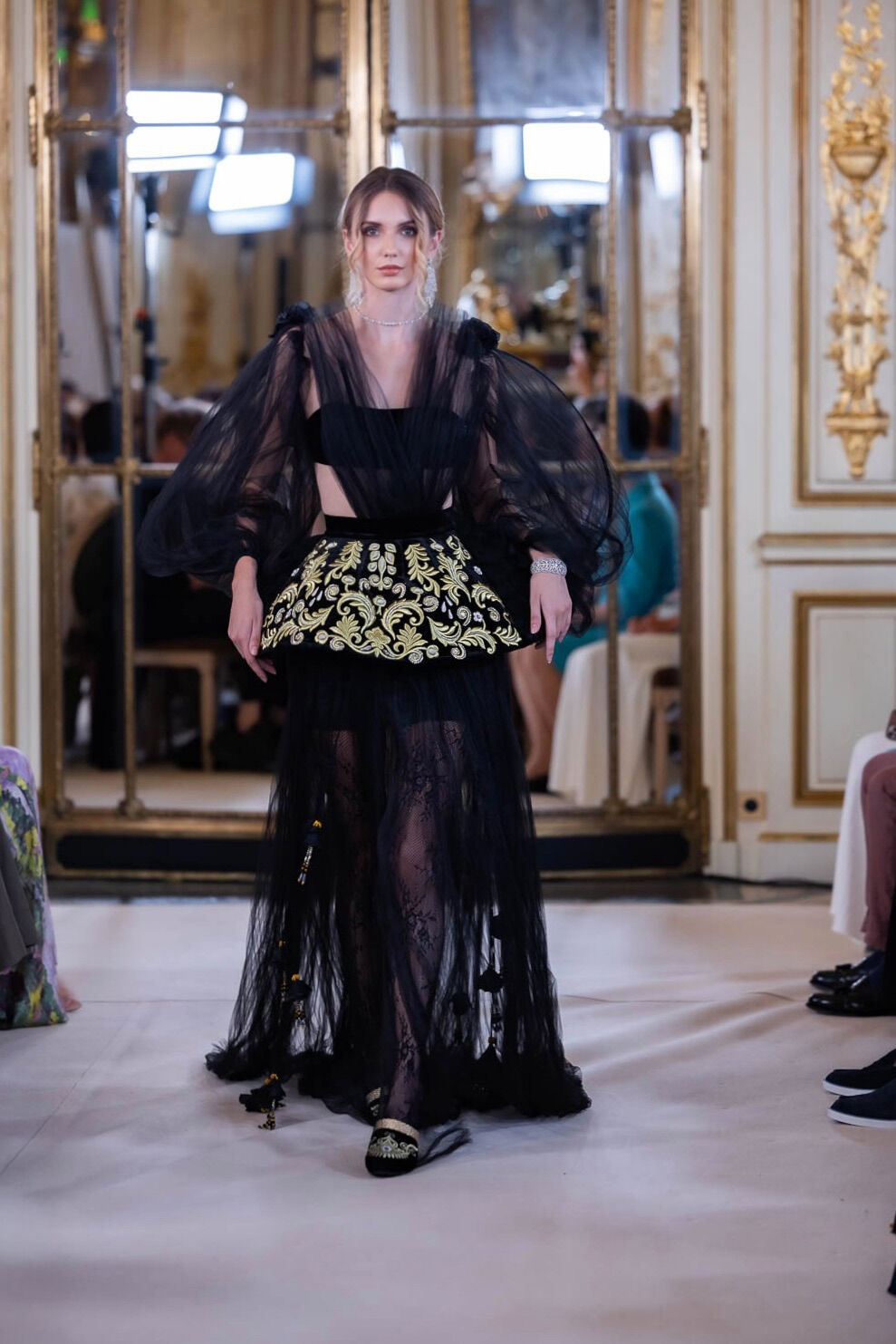
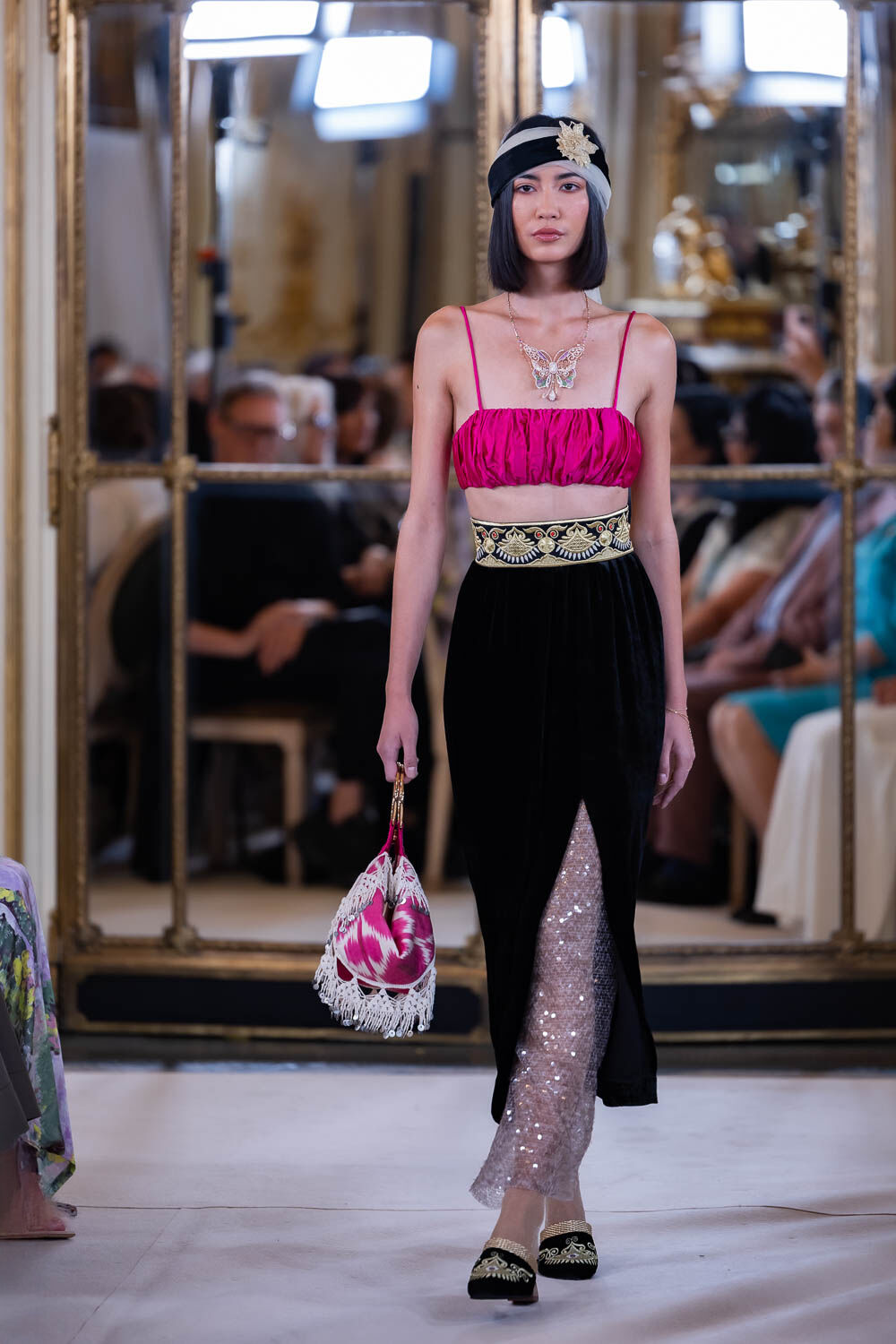
And so, Bukhara spoke in Paris – through golden threads intertwining reverence for the past with a confident gaze into the future. The LALI collection became a symbol of how heritage need not be confined to museum halls – it can live on the world’s runways, inspiring new generations to see in culture not just history, but an endless source of beauty and strength.
Photos are by Paul Tomasini.


